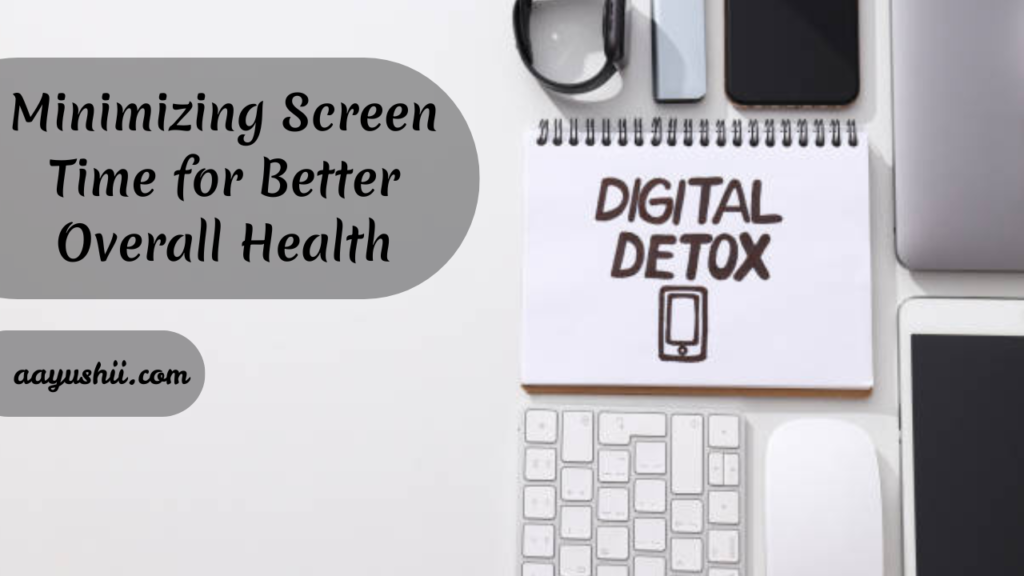In our hyper-connected world, digital devices have become indispensable. Smartphones, laptops, televisions, and tablets are woven into almost every aspect of our daily lives. However, the very tools meant to streamline our tasks and keep us informed can also undermine our physical health, mental well-being, and social relationships if not managed properly. Constant notifications, social media updates, and the seemingly endless information streaming through our screens often create digital overload. Over time, excessive screen use can lead to stress, diminished productivity, and even health problems like eye strain and poor posture.
A digital detox is an intentional break or reduction from using electronic devices or certain applications to help you reclaim your time, attention, and mental clarity. This article explores what a digital detox entails, why it’s vital for better overall health, and how to apply digital detox principles in practical, sustainable ways. We will examine the concept in detail, including the health impacts of overexposure to screens, the short- and long-term benefits of cutting back, and evidence-based strategies to ensure lasting improvement. Whether you are looking to take a full break from social media for a set period or simply want to manage notifications more effectively, this in-depth guide will give you the tools, tips, and insights to reclaim your well-being in a digitally dominated landscape.
Table of Contents
Understanding Digital Overload

Digital overload refers to a state where the amount of digital content and online stimuli surpasses our ability to process it in a healthy, balanced way. This situation arises when individuals feel constantly bombarded by messages, alerts, and notifications, often leading to anxiety, reduced focus, and lowered productivity. The modern environment fosters constant connectivity: workplaces expect employees to answer emails after hours, friends and family rely on quick social media interactions, and many people fill every idle moment with scrolling through feeds.
The Root Causes of Digital Overload
- Easy Accessibility: The ubiquity of smartphones makes it convenient to be online anywhere, anytime, contributing to a blurred line between work, socializing, and personal time.
- Fear of Missing Out (FOMO): People are often afraid to disconnect because they might miss an important message, trending topic, or breaking news.
- Social Validation Loop: Likes, shares, and comments on social media can be addictive, reinforcing compulsive checking of notifications.
- Work Culture: Many organizations value quick responses, creating an “always-on” environment that encourages employees to remain plugged in.
How Digital Overload Affects Our Daily Lives
- Reduced Attention Span: Constant distractions can shorten our ability to focus, leading to a cycle of frequent task-switching and lower efficiency.
- Stress and Burnout: The pressure to stay updated and respond promptly can create chronic stress, which can escalate into burnout if left unaddressed.
- Weakened In-Person Connections: Excessive device use may cause individuals to miss face-to-face moments, hampering communication skills and social bonding.
Understanding digital overload is the first step toward mitigating its effects. By acknowledging the pervasive nature of screen exposure, we can begin to see how a structured “digital detox” might help regain control.
What Is a Digital Detox?
A digital detox is a deliberate period of reduced or no usage of electronic devices such as smartphones, computers, and tablets. The concept primarily focuses on cultivating healthier interaction patterns with technology, rather than entirely condemning or abandoning its use. During a digital detox, you might choose to step away from specific applications, limit online activities to certain times of the day, or even unplug entirely for a weekend or vacation.
Core Principles of a Digital Detox
- Intentionality: You consciously decide which digital activities to reduce or eliminate rather than passively letting technology dictate your time.
- Self-Awareness: Digital detox efforts usually involve tracking and reflecting on your screen time behaviors to understand triggers and usage patterns.
- Boundaries and Limits: You establish firm guidelines, such as “no screens one hour before bed” or “no social media on weekends.”
- Mindful Substitution: Instead of aimless scrolling, you substitute devices with engaging offline activities like reading books, exercising, or socializing face-to-face.
The detox process aims to recalibrate your relationship with technology so that it serves your interests without eroding your well-being. Think of a digital detox not just as a short-term reset but also as a stepping stone to a healthier, more sustainable tech-life balance.
Why Do We Need a Digital Detox?
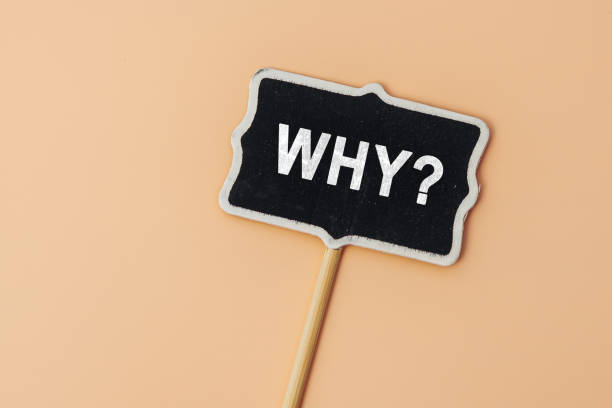
It might seem impossible to imagine life without constant digital connectivity. After all, we rely on apps for navigation, music streaming, social connection, and even grocery delivery. However, like any tool, technology carries risks when misused or overused.
Societal Shifts and Constant Connectivity
Technology is no longer merely a tool but a 24/7 environment. The lines between “online” and “offline” have blurred:
- Remote Work: The rise in remote work, accelerated by global events, means many now work, live, and socialize within the same digital space.
- Social Platforms as Community Hubs: Facebook groups, Instagram stories, and online forums often replace or supplement real-life communities.
- Endless Content: On-demand streaming platforms can turn free time into binge-watching sessions that easily stretch longer than intended.
Alarming Statistics on Screen Time
- According to various global studies, adults can spend an average of 8-10 hours daily in front of screens (computers, smartphones, TVs).
- Teenagers and younger adults can surpass that number due to heavy social media and gaming.
- Studies reveal a growing trend in technology addiction, notably among youth, which can lead to academic, social, and mental health problems.
Indicators That You Might Need a Digital Detox
- Constant Distraction: Struggling to focus on tasks without checking your phone or computer.
- Emotional Distress: Feeling anxious or irritable when you can’t access your phone or the internet.
- Poor Sleep Quality: Using devices late into the night can disrupt sleep patterns, leading to fatigue.
- Neglected Responsibilities: Missing deadlines, having messy living spaces, or letting healthful habits slide because digital activities consume your time.
- Relationship Issues: Loved ones comment that you’re always “glued to your screen” or you feel disconnected during social gatherings.
A digital detox gives us the opportunity to return to a state of mindful use, ensuring technology remains beneficial rather than detrimental. It helps break cycles of dependency, prevents overreliance on digital distractions, and fosters personal growth and self-discovery outside the digital sphere.
Physical Health Implications of Excessive Screen Time

It’s easy to think of screen time purely in terms of mental or social effects, but prolonged device usage also carries real physical risks. These issues often accumulate over time, gradually affecting your posture, eyesight, and even sleep.
Eye Strain and Vision Problems
- Digital Eye Strain: The average person blinks less frequently while staring at a screen, leading to dryness and irritation.
- Blue Light Exposure: Screens emit blue light, known to interfere with the body’s production of melatonin, a hormone necessary for sleep regulation.
- Symptoms: Headaches, blurred vision, and difficulty focusing are common.
- Preventive Measures:
- The 20-20-20 Rule: Every 20 minutes, look at something 20 feet away for 20 seconds.
- Use Blue Light Filters: Many devices have night modes to reduce blue light.
Neck and Back Pain
- Text Neck: Continuously bending your head to view screens strains neck muscles and can cause chronic pain.
- Posture Damage: Slouching at a computer or hunching over a smartphone can lead to spinal misalignment over time.
- Tips:
- Adjust Screen Height: Keep your monitor at eye level.
- Take Frequent Breaks: Briefly stand, stretch, or walk around every 30-60 minutes.
Sedentary Lifestyle and Weight Gain
- Reduced Physical Activity: More time on devices often translates to less movement, which can contribute to weight gain and decreased cardiovascular health.
- Poor Eating Habits: Mindless snacking during screen use can lead to overeating.
- Solutions:
- Active Breaks: Incorporate short bursts of exercise, like squats or jumping jacks, during breaks.
- Limit Screen Use During Meals: Pay attention to hunger cues to avoid overeating.
Sleep Disturbances
- Circadian Rhythm Disruption: The blue light from screens in the evening can trick your body into thinking it’s daytime.
- Insomnia: Constant mental stimulation from social media or gaming at night can make it hard to wind down.
- Recommendations:
- Screen-Free Bedroom: Avoid bringing phones or laptops into your sleeping area.
- Wind-Down Rituals: Engage in calming activities like reading a physical book or practicing meditation.
Recognizing these physical implications underscores the importance of balancing screen use. A digital detox can alleviate many of these issues by freeing time and mental space for healthier habits like exercise, face-to-face socializing, and better sleep hygiene.
Mental and Emotional Consequences of Screen Overuse

While physical health concerns are significant, mental and emotional well-being also suffer from excessive screen time. Digital platforms can become echo chambers that feed stress, anxiety, and negative self-comparisons.
Stress and Anxiety
- Information Overload: A relentless flow of news and updates can heighten feelings of anxiety or distress.
- Work-Life Imbalance: Remote working conditions often remove the clear boundary between office hours and personal time, leading to chronic stress.
- Notification Anxiety: Frequent pings and alerts trigger our fight-or-flight response, elevating cortisol levels (the stress hormone).
Social Media and Self-Esteem
- Comparison Trap: Platforms like Instagram or TikTok highlight only the “best moments” of others, leading users to feel inadequate.
- Cyberbullying: Negative comments or harassment online can fuel depression and anxiety, especially among young people.
- Addictive Design: Social networks often use algorithms that encourage continued scrolling, making it challenging to disconnect.
Reduced Cognitive Function
- Shortened Attention Span: Switching between apps and tabs can impair the ability to concentrate on tasks for extended periods.
- Memory Impairment: Multi-tasking with tech can hinder information retention and recall.
Emotional Exhaustion
- Constant Alerts: Being perpetually “on call” can exhaust emotional resources, leaving little energy for meaningful offline activities.
- Depression Risks: Studies show correlations between high social media use and increased risk of depressive symptoms, partly due to isolation and negative self-perceptions.
A digital detox allows individuals to step back, reduce the input of stressful or distracting content, and gain a more balanced perspective. It also offers a space to cultivate offline hobbies, connect with friends and family in person, and practice mindful activities that promote mental health.
Benefits of a Digital Detox

By temporarily or permanently limiting your screen use, you can reap an array of health benefits, from lowered stress to stronger interpersonal relationships. Understanding these advantages can motivate you to commit to a structured reduction of screen time.
Improved Physical Health
- Better Posture: Fewer hours hunched over a device can ease back and neck pain.
- Eye Health: Allowing eyes to rest lowers the risk of chronic dryness and irritation.
- Increased Activity Levels: Less time in front of screens can free up opportunities for exercise, sports, or even simple walks.
Enhanced Mental Clarity
- Focus and Productivity: With fewer digital distractions, you can work and think more efficiently.
- Mindful Presence: A break from screens helps you stay mentally present during everyday tasks, reducing stress.
- Decreased Anxiety: Without the pressure of constant notifications, you can experience calmer, more restorative moments.
Stronger Social Connections
- Quality Interactions: Time away from screens often fosters deeper and more meaningful face-to-face conversations.
- Shared Activities: Engaging in offline hobbies with friends or family builds community and connection.
- Improved Empathy: Real-life interactions can enhance emotional intelligence and understanding in ways that digital communication often cannot.
Better Sleep
- Regular Sleep Cycle: Reduced blue light exposure near bedtime supports natural circadian rhythms.
- Higher Quality Rest: Less mental stimulation from scrolling or gaming contributes to a more restful sleep.
Self-Discovery and Personal Growth
- Reconnecting With Passions: Time spent offline can be reinvested into hobbies, educational pursuits, or creative projects.
- Self-Reflection: Without continuous digital noise, you have space for introspection, goal-setting, and personal development.
- Emotional Resilience: Regularly disconnecting builds discipline and resilience against compulsive, stress-inducing habits.
Embracing these benefits is a powerful motivator for anyone seeking a healthier, more balanced approach to technology. A digital detox can be as simple as not checking your phone first thing in the morning or as ambitious as a month-long break from social media. Whatever the scope, the results can positively transform your life.
Preparing for a Digital Detox
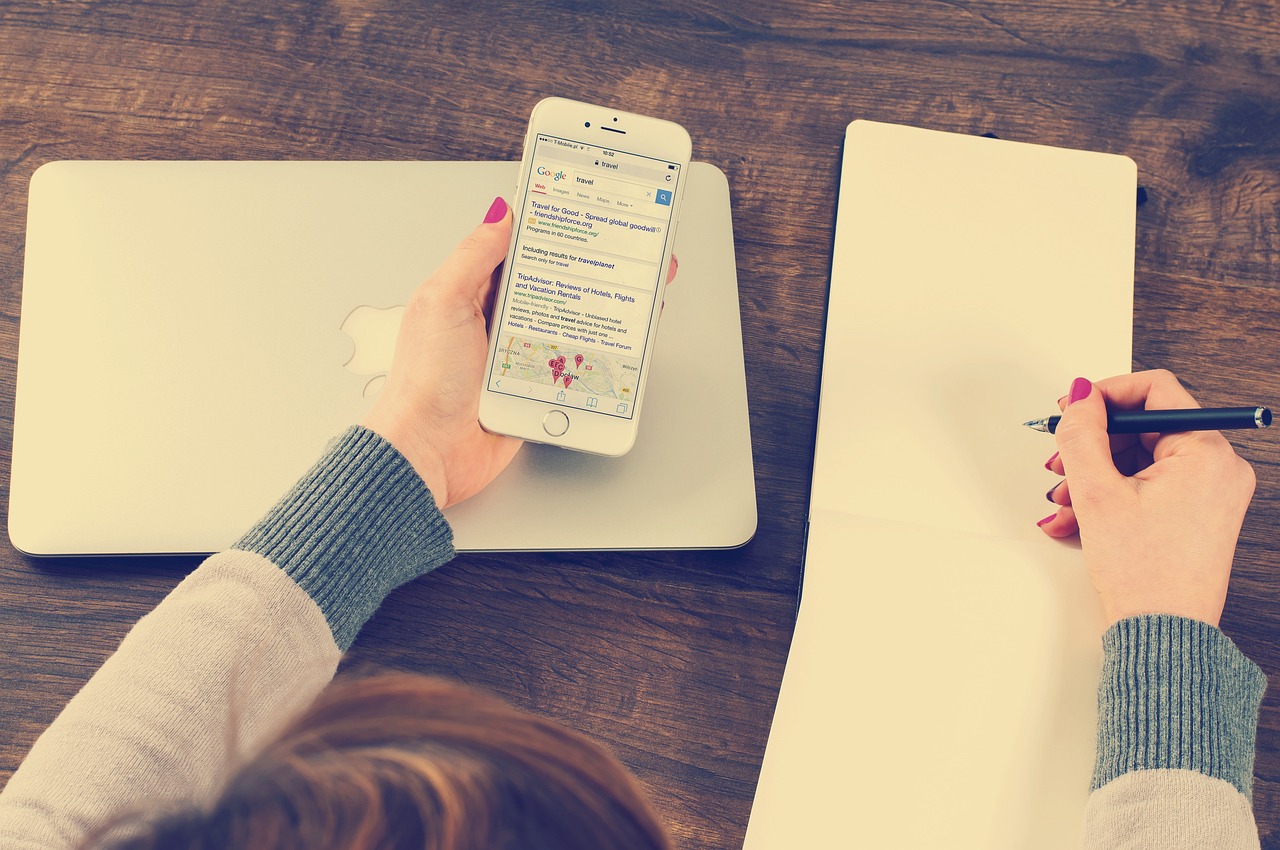
A successful digital detox begins with proper planning. Many people initially fail at reducing screen time because they dive in without setting clear goals, expectations, or boundaries. By preparing in advance, you can set yourself up for a more seamless transition.
Self-Assessment
- Track Your Screen Time: Use built-in phone apps or third-party tools like Rescue Time or Moment to understand your current usage patterns.
- Identify Problem Areas: Determine which apps or devices consume the most time. Is it social media, streaming services, or gaming?
Set Realistic Goals
- Specific Targets: Aim to reduce screen time by a certain percentage or set absolute time limits (e.g., no more than 2 hours of social media per day).
- Short- vs. Long-Term Plans: Maybe start with a weekend detox, then transition to ongoing restrictions like no phones during dinner or an hour before sleep.
- Select the Scope: Are you avoiding all screens (TV, smartphone, laptop) or just certain platforms (social media, news sites, etc.)
Gather Support
- Inform Friends and Family: Let them know about your digital detox goals so they understand your reduced availability.
- Find an Accountability Partner: Team up with a friend or family member who also wants to cut back on screen time.
- Create Boundaries at Work: If possible, communicate with colleagues or managers about your intention to limit after-hours email checks.
Plan Substitutes
- Alternative Activities: Make a list of hobbies or tasks to engage in when you have the urge to check your phone—reading, journaling, or yoga.
- Offline Entertainment: Consider board games, puzzles, or spending time outdoors to replace streaming services or video games.
Careful preparation significantly increases the likelihood of a successful digital detox, making it easier to avoid relapses and ensuring you have healthy alternatives ready to fill the time once monopolized by screens.
Effective Strategies to Minimize Screen Time
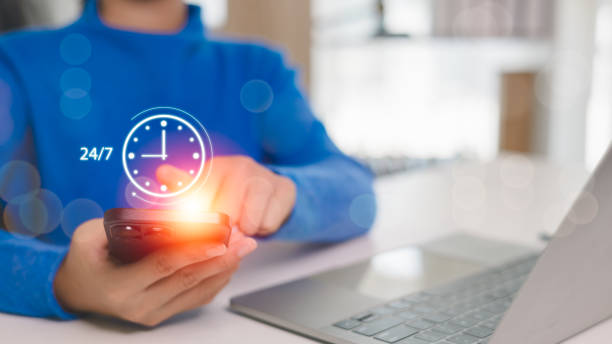
Though going “cold turkey” is an option, most people find a gradual, methodical approach more sustainable. Below are proven strategies for minimizing screen exposure without feeling deprived or disconnected.
Use Built-In Device Tools
- App Timers and Limits: Both iOS and Android offer features that track usage and set daily limits for specific apps.
- Focus Modes: Enable modes that silence notifications during work hours or at bedtime to reduce digital interference.
Create Screen-Free Zones
- Bedroom Boundaries: Keep devices out of the bedroom to improve sleep quality.
- Common Areas: Designate certain rooms or times (like family meals) as screen-free.
- Digital Curfew: Set a strict cutoff time each evening to stop using devices.
Batch Your Online Activities
- Check Emails in Blocks: Instead of constantly monitoring email, set specific times (e.g., three times per day) to process messages.
- Manage Social Media: Dedicate a 15-minute window for scrolling, commenting, and updating your status, rather than intermittently checking throughout the day.
Turn Off Non-Essential Notifications
- App Settings: Disable alerts from apps that aren’t crucial to your daily routine.
- Social Media: Remove push notifications that prompt unnecessary scrolling.
- Smartphone Downtime: Use your device’s Do Not Disturb feature to silence notifications during selected hours.
Leverage Physical Reminders
- Sticky Notes: Place “Do I Need My Phone Right Now?” reminders near your workspace.
- Visual Cues: Keep your phone in a drawer or another room, so it’s not always within arm’s reach.
Engage in Offline Activities
- Adopt New Hobbies: Explore crafts, sports, volunteering, or reading physical books.
- Socialize in Person: Replace group chats with coffee dates or phone calls with face-to-face interactions when possible.
- Physical Fitness: Schedule regular exercise or join a class that keeps you active offline.
Reward Systems
- Positive Reinforcement: Treat yourself (e.g., with a favorite snack or an enjoyable experience) for meeting weekly or monthly screen-reduction goals.
- Shared Accountability: Challenge friends or family to reduce screen time and celebrate milestones together.
Consistency is key. Even small steps, like turning off one type of notification or designating one evening per week as “device-free,” can cumulatively have a major impact on your screen habits over time.
Practical Examples of Digital Detox Schedules
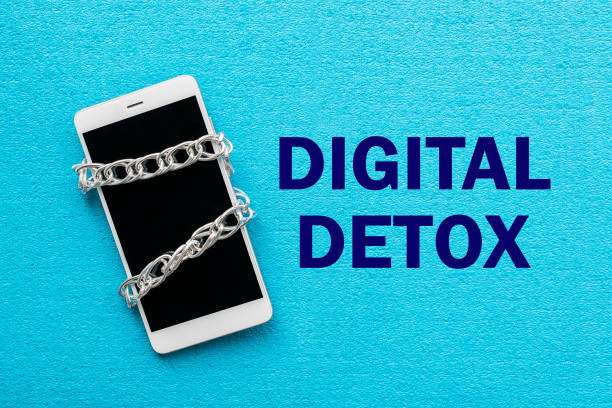
Curating a digital detox plan requires understanding your personal and professional obligations. Below are sample schedules to inspire your own approach.
Weekend Digital Detox
- Friday Evening (7 PM): Power down all non-essential devices.
- Saturday:
- Morning: Go for a walk or run without your phone.
- Afternoon: Read a book or practice a creative hobby.
- Evening: Spend quality time with friends or family.
- Sunday:
- Morning: Journal about the experience of not checking your phone.
- Afternoon: Prep meals, do chores, and continue offline hobbies.
- Evening (6 PM): Gradually reintroduce digital devices if necessary—check essential email or texts only.
Partial Daily Detox for Busy Professionals
- Work Hours (8 AM – 6 PM):
- Check email at designated blocks (9 AM, 1 PM, and 4 PM).
- Turn on Do Not Disturb outside these blocks.
- After Work (6 PM – 9 PM):
- Limit social media to 20 minutes.
- No screens during dinner.
- Bedtime Routine (9 PM – 10 PM):
- Power off devices or place them in another room.
- Practice a calming activity like reading a physical book or meditation.
One-Week Social Media Fast
- Preparation: Inform online contacts you’ll be off social media for a week.
- Execution:
- Temporarily delete social media apps from devices.
- Replace habitual checks with journaling or texting friends directly.
- Track how much time is reclaimed by not scrolling.
- Assessment:
- End of Week: Reflect on changes in mood, productivity, and stress levels.
These examples illustrate that digital detoxes can be personalized to fit diverse lifestyles. Whether you opt for a brief weekend break or a more extended plan, the goal is to find a balance where you consciously control technology rather than the other way around.
Integrating Mindful Technology Use in Daily Life

A full-blown digital detox can be a powerful reset, but lasting results often come from smaller, consistent habits. Integrating mindful technology practices into your daily routine ensures that you maintain the gains from any detox period.
The Practice of Mindfulness
Mindfulness involves being fully present and engaged in the current moment without judgment. When applied to technology:
- Intentional Logging In: Pause and ask yourself why you’re opening an app. Is it for a specific task or out of boredom?
- Single-Tasking: Focus on one digital task at a time—resist the urge to switch between multiple browser tabs or apps.
Digital Minimalism
Coined by author Cal Newport, Digital Minimalism encourages using technology in a way that strongly aligns with your values:
- Curate Your Apps: Keep only those that truly enhance or support your personal and professional goals.
- Regular Decluttering: Unsubscribe from email lists or social media accounts that don’t add value.
Scheduled Disconnects
- Daily Quiet Times: Dedicate brief windows during the day (5-10 minutes) where you intentionally step away from devices.
- Weekly “Sabbath”: Select one day each week—or half a day—where you minimize or cease non-essential screen use.
Conscious Consumption
- Limit News Exposure: Check headlines only once or twice a day. Constant news updates can be mentally draining.
- Positive Content: Follow social media profiles that inspire learning, growth, or positivity rather than fueling comparison or conflict.
By practicing mindfulness and digital minimalism, you maintain a state of conscious awareness around how you use technology, preventing the slide back into unhealthy, reflexive usage patterns.
Common Pitfalls and How to Avoid Them
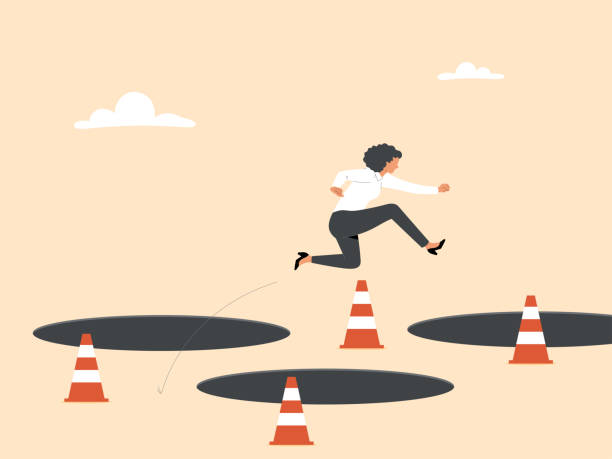
Embarking on a digital detox journey is not without obstacles. Being aware of common pitfalls can help you proactively address them.
Overambitious Goals
- Pitfall: Trying to quit all screen-based activities at once can be overwhelming, leading to quick relapse.
- Solution: Start with more achievable goals. Gradually phase out or reduce the most problematic apps before moving on to others.
Lack of Clear Boundaries
- Pitfall: Vague commitments like “I’ll use my phone less” leave too much room for interpretation.
- Solution: Set explicit rules (e.g., “No phone use at the dining table” or “No social media before 10 AM”).
Social and Work Pressures
- Pitfall: Friends or coworkers might expect immediate responses.
- Solution: Communicate your plans. Let them know you won’t be as responsive during certain hours. If possible, share calendar blocks indicating your availability.
Emotional Dependency
- Pitfall: Checking your phone or scrolling can become a coping mechanism for boredom, anxiety, or sadness.
- Solution: Identify triggers and replace digital fixes with healthier alternatives (deep breathing, going for a quick walk, etc.).
Failing to Fill the Void
- Pitfall: Suddenly having more free time can feel uncomfortable, leading to a return to digital habits.
- Solution: Pre-plan activities or projects (e.g., start a small home improvement task, join a club, or spend time outdoors).
Being prepared for these challenges and having strategies in place to manage them significantly improves your chances of a successful digital detox.
Signs You’ve Successfully Reduced Screen Dependence

How do you know your digital detox or ongoing tech-reduction efforts are genuinely working? Look for these indicators:
- Less Urgency: You feel fewer urges to check your phone and can leave it aside without anxiety.
- Improved Focus: You can concentrate on tasks (reading, work, conversations) for longer periods without succumbing to digital distractions.
- Better Mood: You notice a decrease in stress, anxiety, or irritability when you’re away from your devices.
- Quality Sleep: You fall asleep faster, sleep more soundly, and wake up feeling more refreshed.
- Stronger Relationships: Friends or family comment that you’re more “present” during gatherings.
- Increased Productivity: Tasks get done more efficiently because you’re less fragmented by notifications.
- Personal Growth: You find more time for hobbies, exercise, or self-reflection, leading to new skills or insights.
These signs don’t necessarily appear all at once or within the same timeframe for everyone. Nevertheless, they indicate that your efforts to step back from screens pay off in tangible ways.
Conclusion
In an era where we’re perpetually tethered to devices, reclaiming your time and attention through a digital detox can profoundly enhance your well-being. By understanding the negative impacts of excessive screen time—ranging from eye strain and poor posture to anxiety and weakened social bonds—you equip yourself with the motivation and awareness to take meaningful action. The physical, mental, and social benefits of even a short break from screens can be transformative, leading to better sleep, improved relationships, and a renewed sense of calm.
Yet, a digital detox is most effective when paired with long-term mindful technology practices. Setting clear boundaries, using helpful tools to limit usage, and consciously curating the digital content you consume all contribute to a healthier, more balanced lifestyle. Whether you opt for a weekend unplug or integrate daily “micro-detoxes,” these measures allow you to become the master of your technology, rather than a servant to it.
Lasting change takes time, so embrace your digital detox with realistic goals, a supportive environment, and intentional strategies to make the transition smoother. Instead of completely giving up modern conveniences, focus on using technology more mindfully. By doing so, you create space for activities that enrich your life, strengthen relationships, and boost productivity. Ultimately, reducing screen time isn’t about disconnecting from the world—it’s about reconnecting with what truly matters. Sometimes, the best way to connect is to unplug.
For more healthcare tips, visit aayushii.com.
Frequently Asked Questions
Will a Digital Detox Impact My Work?
A well-planned digital detox should not negatively affect your work. Communicate with your team and managers about your availability. Instead of constantly checking messages, schedule specific times to go through emails and notifications. Often, you’ll find that focused, uninterrupted work sessions can increase productivity.
How Long Should a Digital Detox Last?
There’s no universal rule. Some find a short, intense detox (like a weekend or a few days) highly effective, while others prefer gradual, ongoing reductions. The key is to set realistic goals and maintain mindfulness even after the initial detox period ends.
Do I Have to Eliminate All Technology?
Not at all. The goal is to establish healthier habits, not to renounce technology completely. A balanced approach might mean only checking social media once a day or unplugging from all devices only during certain times, such as evenings and weekends.
Are There Tools That Can Help Me?
Yes. Plenty of apps and built-in features offer screen time tracking, website blocking, and notification management. Popular tools include Forest, RescueTime, and Apple’s Screen Time or Android’s Digital Wellbeing.
What If I Relapse?
Relapses can happen, especially when life gets stressful. If you slip back into old habits, treat it as an opportunity to learn. Reassess your goals, identify what triggered the relapse, and adjust your strategy (e.g., tightening notification settings or finding a new accountability partner).

